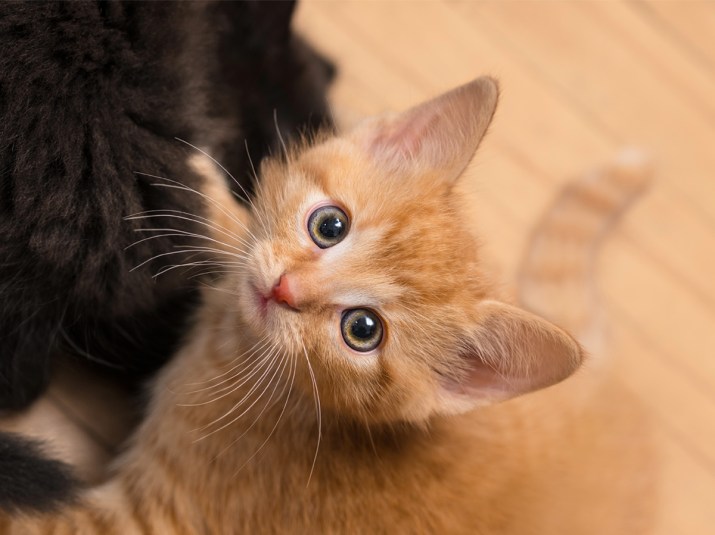Here’s What Your Cat Is Trying to Tell You With Its Ears
It's their way of communicating!

If cat eyes are the window to their soul, then cat ears just might be the window to their emotions. Experts say kitty ears can be quite revealing when it comes to what your feline is really feelin’ deep down inside. Now that we know what our cats are trying to tell us with their tails, take a look below to see what he or she is trying to tell you with these common cat ear positions.
Forward Ears
According to the Humane Society of the United States, this ear position means that your cat is feeling interested, alert, or simply happy. Kitties who are especially curious might use this position often so they can listen carefully to sounds happening in front of them. You might notice that your pet has forward-pointing ears while playing with a favorite toy, or perhaps while gazing outside the window (was that a bird?).
Backward, Sideways, or Flat Ears
Sometimes called “airplane ears,” these positions or any combo of them often mean your cat is angry, irritable, or frightened. According to Cats International, a cat who’s in defensive mode typically lies its ears down flat in order to protect the head. Meanwhile, a feline who’s being aggressive will usually show flat ears with a “twist” — you’ll be able to see the tips of the back of the ears from the front. Either way, this is not the time to pick your cat up or try to snuggle.
Swiveling Ears
This is a sign that your cat is being extremely attentive, listening to every sound it can and taking full advantage of its excellent hearing. According to Catster, cat ears have more than two dozen muscles, giving them the ability to do a 180-degree swivel forward, backward, up, and down. So don’t be freaked out if you see that happen! However, you will want to pay attention if your cat’s ears start twitching — while this is usually just a sign of nervousness, persistent twitching may point to a medical issue that needs a vet’s attention.
No matter what your cat’s ears are doing, you’ll definitely want to “listen up”!












